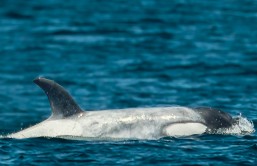Researchers discovered that the Hawaiian island of O'ahu is actually made up of three major shield volcanoes; in the past researchers thought it consisted of only two.
The island itself is the remnants of the Wai'anae and Ko'olau volcanoes, but researchers discovered a "precursor volcano" nearby, a University of Hawaii ‑ SOEST news release reported.
Off the western tip of O'ahu, there is a "large region of shallow bathymetry" called Ka'ena Ridge, the news release reported. This region is believed to represent the precursor volcano which helped form the Wai'anae and Ko'olau Volcanoes.
In the past researchers believed the Wai'anae Volcano was believed to be extremely large and to have formed at an usually large distance from its neighbor.
"Both of these assumptions can now be revised: Wai'anae is not as large as previously thought and Ka'ena Volcano formed in the region between Kauai and Wai'anae," John Sinton, lead author of the study and Emeritus Professor of Geology and Geophysics at the UHM School of Ocean and Earth Science and Technology (SOEST), said in the news release.
In 2010 the researchers looked into the chemistry of Wai'anae's unusual lava.
"We previously knew that they formed by partial melting of the crust beneath Wai'anae, but we didn't understand why they have the isotopic composition that they do," Sinton said. " Now, we realize that the deep crust that melted under Waianae is actually part of the earlier Ka'ena Volcano."
To make their findings the researchers gathered "high-quality bathymetric data of the seafloor," the news release reported. This new information allowed them to look at the morphology of the sea floor.
The team also collected samples from the Ka'ena and Wai'alu submarine ridges. The information pointed out that Wai'anae must have formed on the flanks of Ka'ena.
"What is particularly interesting is that Ka'ena appears to have had an unusually prolonged history as a submarine volcano, only breaching the ocean surface very late in its history," Sinton said
In future studies the researchers hope to gain insight into Ka'ena's most recent activity.








